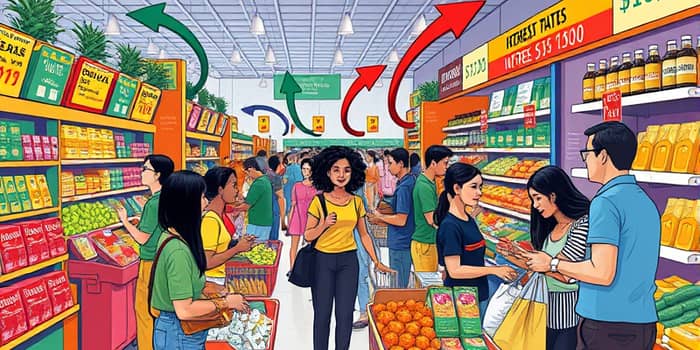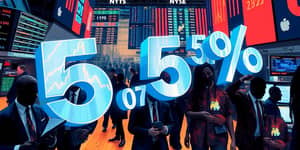
In the wake of successive economic shocks, consumers and companies alike are navigating a landscape defined by higher interest rates, fresh tariffs, and persistent inflationary pressures. From late 2024 into 2025, the era of easy price increases for consumer goods has given way to mounting resistance at every turn. Understanding this shift is critical for policymakers, businesses, and households striving to adapt.
Since early 2022, the Federal Reserve has pursued an aggressive campaign of monetary tightening to rein in inflation. By mid-2025, benchmark rates have risen to levels unseen for over a decade, driving up borrowing costs across mortgages, auto loans, and credit cards. The Fed’s goal remains clear: bring inflation back toward its 2% target even if it risks slowing economic growth.
Consumers now face elevated interest payments on new and variable-rate debt. With credit card rates hovering above 20% and auto loans averaging over 7%, household budgets are increasingly squeezed. This dynamic curbs discretionary spending as essential costs—housing, transportation, and credit servicing—absorb larger shares of income.
Compounding monetary tightening, new tariffs introduced in 2025 have driven import costs sharply higher. Tariffs on Chinese goods, initially peaking at 145%, were scaled back to 30%, but not before inflicting significant price hikes on key categories. Estimates suggest these levies added a 2.3% bump to overall price levels, translating to an average loss of $3,800 per household annually.
The sectors most affected include apparel, food, fresh produce, and motor vehicles. Companies that once absorbed some tariff impact now pass almost the full cost onto consumers, fueling further inflationary pressure at the checkout counter.
Despite headline inflation cooling from its 2022–2023 peaks, prices remain elevated. Surveys show that by April 2025, consumer sentiment sank to its second-lowest level on record. Many households have reached a breaking point, cutting back on nonessential purchases and seeking lower-cost alternatives.
Evidence of this “trading down” phenomenon is widespread:
University of Michigan data reveals one-year inflation expectations zooming to 6.5% in April 2025—the highest since the 1980s. With future prices anticipated to rise, consumers exhibit both cautious budgeting and a reluctance to commit to big-ticket expenses.
Faced with heightened consumer price sensitivity and fatigue, companies in the consumer goods sector can no longer rely solely on passing costs through price hikes. Instead, many are pivoting toward strategic innovations to protect margins and retain customer loyalty.
Key corporate strategies include:
These measures aim to deliver savings and maintain brand relevance without resorting to frequent price increases. Early adopters report improved cost control and customer retention, demonstrating the value of supply chain optimization and resilience strategies.
Looking ahead, consumer spending growth is expected to decelerate sharply, slowing to just 1% in 2026. Durable goods volumes may even decline as high financing costs and price-conscious buyers delay purchases. Retailers warn that without wage growth keeping pace with inflation, households will struggle to absorb any further cost increases.
Additional risks include ongoing supply chain disruptions tied to geopolitical tensions, potential further tariff escalations, and uncertainty over Federal Reserve policy. A misstep in easing monetary policy too quickly could reignite inflation, while overly aggressive tightening might trigger a deeper economic slowdown and higher unemployment.
The convergence of monetary tightening and elevated tariffs has ushered in a new era for consumer goods markets. Both companies and consumers face a challenging environment where past strategies no longer suffice. Moving forward, resilience will hinge on innovative cost-management and value-first offerings that meet evolving consumer expectations.
Policymakers and industry leaders must collaborate to foster wage growth, streamline trade policies, and encourage technological investments. Only through coordinated efforts can the economy navigate this period of adjustment and build a foundation for sustainable, inclusive growth in the consumer sector.
References













